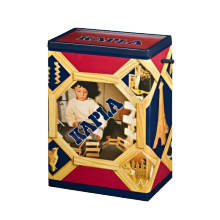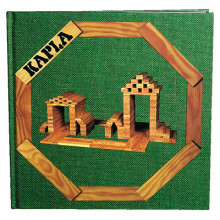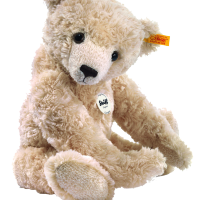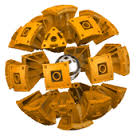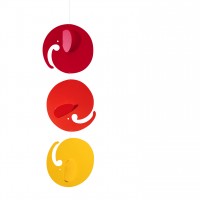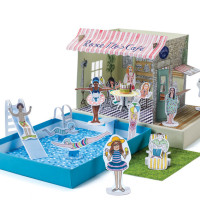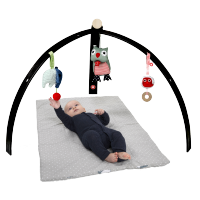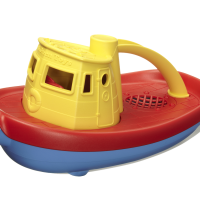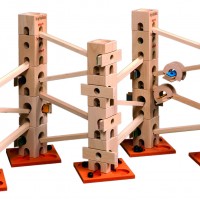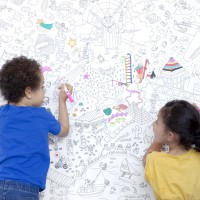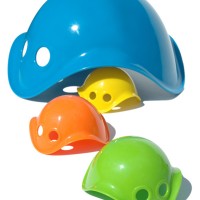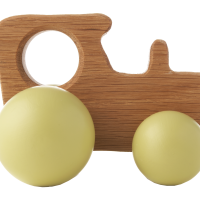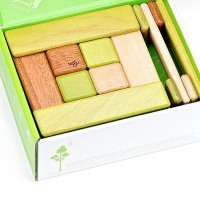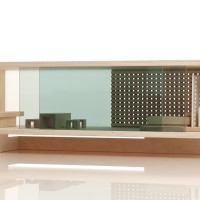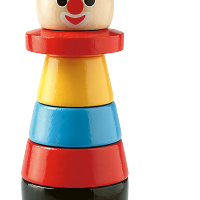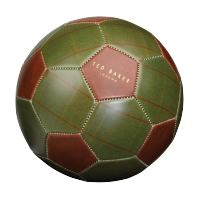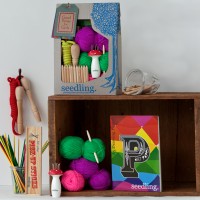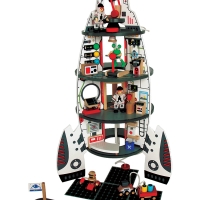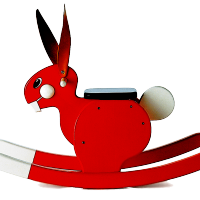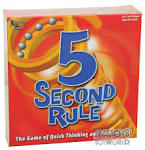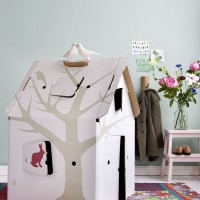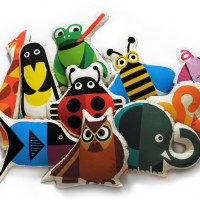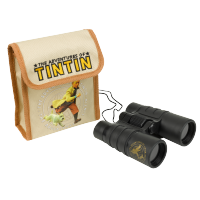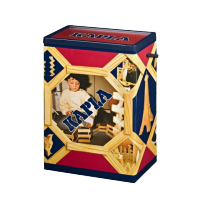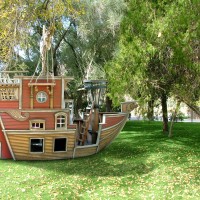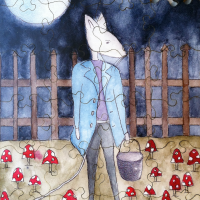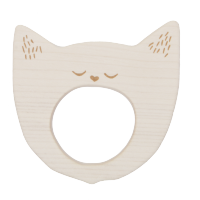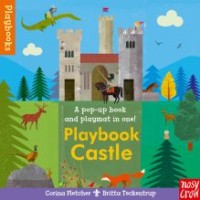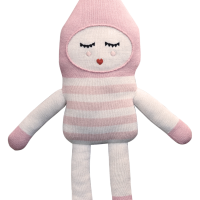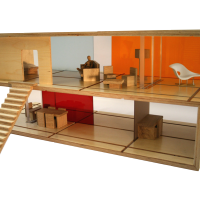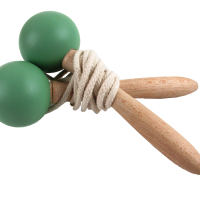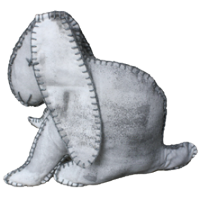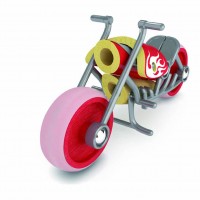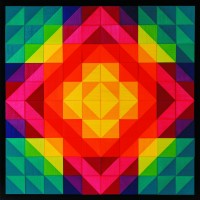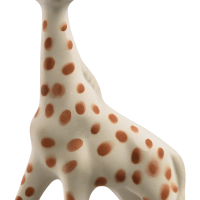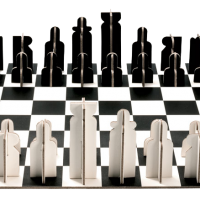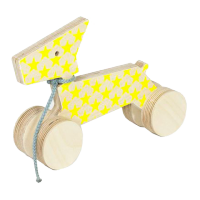It only takes one successful build to turn KAPLA wood planks into an addictive game that has everyone down on the floor attempting to outdo one another in their architectural ambitions!
Invented in 1987 by Tom van der Bruggen, KAPLA blocks were the unintended outcome of his dream to build a castle – not a KAPLA block castle, but a real life castle. Born in The Netherlands, he’d studied Art History before travelling through the south of France, where he fell in love with an old ruined farm and decided to turn it into the castle of his dreams, with little towers, fountains and a carriage entrance.
While making the scale drawings for it, Tom used little wooden blocks to see what the structure would look like. However, the blocks he was using were unable to construct various elements, like floors, roofs and lintels, so he invented a plank that was based on a 1:3:5 progression (three thicknesses of each plank matches one width of each plank, and five widths of each plank equals one length of plank). This opened up a whole new way of building… and, accidentally, a whole new world of children’s construction possibilities.
Made from natural pine (from renewable French forests), the KAPLA planks are deceptively plain – simple rectangular planks. But the beauty of course is that these planks can become anything you can imagine…
With a touch of fantasy, a little skill and a pinch of patience, children will soon be building enchanted towers, winged dinosaurs, the Eiffel Tower
Without even trying, your kids will quickly learn the principles and vocabulary of bridges and buildings, with suspension, cantilevers, arches and counter balance, proportions, ratios and measurement, as well as geometrical shapes and structure. Don’t get me wrong – you might need to look a few things up along the way to help answer some of the more parent-boggling questions (unless you’re an engineer like my good friend Danny!). But it’s a pretty magic equation when your child (or even you!) can learn a couple of concepts and then put them into action without any a) nagging, b) hiring of a tutor or c) parent-directed supervision.
Plus, for those moments when your child is feeling stumped for the next thing to attempt, there’s an instruction booklet included to help inspire! For further inspiration, there are four art books with stunningly beautiful construction projects: Beige Book, with easy animals (ages 3+); Green Book, with simple architecture (3+); Red Book, for beginners (6+); Blue Book, for advanced builders (9+).
But our favourite thing of all is that when you get a little bored of beige, there are a series of coloured planks you can purchase, which makes for an even more enchanted castle construction. There are five different colour sets: light blue/dark blue, green/yellow, red/orange, black/white and an octocolour box set (with 8 colours…). A beautiful addition to the KAPLA equation.
As creator Tom van der Bruggen once said in an interview “Since there is only one element in KAPLA, the solution must come form the brain. It is the ideal compromise between the quality of construction and expression – a little bit like sand, a sophisticated sand that does not get dirty!”
Alternative Play Ideas
- See who can build the tallest/strongest/widest/ tower/bridge/train/elephant (set a time limit and have a ruler handy)
- Experiment with different shaped structures — which shapes produce the strongest structure? The weakest? The most stable? (Invite the youngest/oldest member of the family to be the one to knock it down)
- Practice counting, addition, subtraction and division
- Create a Kapla building stop motion movie to share on Youtube
- Keep a photographic record of all the objects built and add to your Pinterest page – here are some ideas!!
Good For… Dexterity, hand/eye coordination, problem solving, comparative and conceptual development, geometry, mathematical reasoning, parallel play, creativity, concentration, ingenuity, adaptation (when things go wrong…)
What Kids Love Even babies love the feel of these little planks in their hands, and at each age it seems that there is something new they like to do with them. While one child might like to turn them into a log pile to use with their trucks and vehicles, another will be focused on the engineering and architectural possibilities. Although this is often linked to the age of your child, it is more commonly linked with their particular interest at the time.
What Parents Love This has endless possibilities for children and is such an antidote to screen time. They aren’t plastic, eco-friendly and with the addition of colour blocks will produce some pretty show-offable designs.
Awards Winner of Dr Toys Best Toy Award (2006), National Parenting Center Award Winner, Child Magazine Best Toy Award.
Designer Details KAPLA was invented in 1987 by Tom van der Bruggen, an art historian and antique dealer. Born in the Netherlands, he studied the History of Art. “In constructing, we construct ourselves” is a motto he has lived by. Not only did he set about building a castle in France, he also had a piano restoration workshop at the time when he first started building the KAPLA planks. His first few boxes didn’t sell very well, but he found that when he went to the local supermarket and sat down on the floor and played with them, that children quickly joined in, and their parents were quickly ‘sold’ on the product. One of his buyers was a teacher, and Tom was soon invited to work with the French National Education Centre. However, it was when the President of France purchased 300 boxes to give as gifts to personnel at the Elysee Palace, that the KAPLA adventure truly started.

